Paul Levinson's Blog: Levinson at Large, page 197
January 15, 2018
Philip K. Dick's Electric Dreams 1.10 Kill All Others: Too Close for Comfort

The 10th and last episode of Philip K. Dick's Electric Dreams, which I've been reviewing here episode-by-episode (because each one is standalone), and which I hope will be the first ten of very many - is Kill All Others. Although each story is different, they're deeply connected and intertwined by the central, galvanizing themes of all of Dick's work: it is real or an illusion, with the struggle to decide which always laced with paranoia.
 Kill All Others has these characteristics par excellence, and is also the closest to the very time we're living in right now. That makes it closer to Black Mirror than The Twilight Zone, though it feels a lot like a Twilight Zone episode, too. Philbert Noyce sees a political candidate on television - the only candidate running for President - introduce a slogan, "Kill All Others". At first it seems he's the only one who saw this - the real vs. illusion quandary - but soon confirms that others have seen this, and inevitably comes to think of himself as an "other" and then become an "other" himself. This is where the paranoia comes in, with the inevitable Dickian question of whether what Noyce is feeling and seeing is real, or his over-active mind - a reversion, as often happens in Philip K. Dick's stories, to the "is it real" dilemma, which never really goes away.
Kill All Others has these characteristics par excellence, and is also the closest to the very time we're living in right now. That makes it closer to Black Mirror than The Twilight Zone, though it feels a lot like a Twilight Zone episode, too. Philbert Noyce sees a political candidate on television - the only candidate running for President - introduce a slogan, "Kill All Others". At first it seems he's the only one who saw this - the real vs. illusion quandary - but soon confirms that others have seen this, and inevitably comes to think of himself as an "other" and then become an "other" himself. This is where the paranoia comes in, with the inevitable Dickian question of whether what Noyce is feeling and seeing is real, or his over-active mind - a reversion, as often happens in Philip K. Dick's stories, to the "is it real" dilemma, which never really goes away.The story for television, well written and directed by Dee Rees, departs from Dick's original 1953 story, "The Hanging Stranger," replacing nefarious aliens who have taken over the bodies of humans (as in Invasion of the Body Snatchers and Heinlein's Puppet Masters, also the theme of episode 1.7 of Electric Dreams) with just us humans as both villain politician and "others" in Kill All Others. The near-future setting gives us "Yes Us Can" and "Mex Us Can" as government slogans - a good example of how fascism can co-opt democracy by twisting its words - and Royce saying "Kill All Others" is "hate speech". But there's no one who looks like Trump in power - likely because this was written before he was elected, but still unfortunate. The single candidate is a woman, which puts Kill All Others in league with the new season of Homeland and even Claire in House of Cards, with women in charge with dictatorial tendencies. A shot against Hillary Clinton? You can decide. All I'll say is I would have rather seen a Trumpian in this role, since his polices are indeed getting closer and closer by the day to the xenophobia towards everyone around us in Kill All Others.
Good acting by Mel Rodriguez as Noyce, Glenn Morshower (24!) as one of his co-workers, and Vera Farmiga as the nameless candidate.
With the 10-episode anthology concluded for now, I always like to pick a favorite episode. The choice is tough - there are so many superb ones. I guess I'd go with 1.3 Human Is. But I loved almost everything about this series, including the great opening sequence. And I'll be back here with more whenever Electric Dreams continues.
See also Philip K Dick's Electric Dreams 1.1 Real Life: Mutually Alternate Realities ... 1.2 Autofac: Human v Machine ... 1.3 Human Is: Compassion or Alien? ... 1.4 Crazy Diamond: DNA Batteries ... 1.5 The Hood Maker: Telepathy and Police ... 1.6 Safe and Sound: This Isn't A Drill ... 1.7 Father Thing: Dick from Space ... 1.8 Impossible Planet: Eye of the Beholder ... 1.9 The Commuter: Submitted for Your Approval
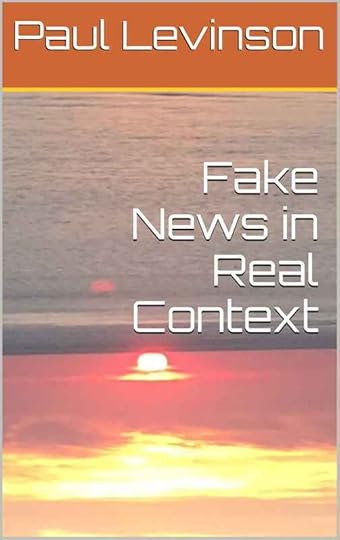 Paul Levinson's books ... Paul Levinson's music
Paul Levinson's books ... Paul Levinson's music
Published on January 15, 2018 13:17
Philip K. Dick's Electric Dreams 1.9 The Commuter: Submitted for Your Approval

I said somewhere in my ongoing one-by-one reviews of Philip K. Dick's Electric Dreams 10-episode standalone anthology on Amazon Prime that I thought the series was "right up there with The Twilight Zone". I just checked - that was in my review of the third episode. I make quick judgments - but I still feel that way. I even entitled my review of Electric Dreams 1.8 Impossible Planet "Eye of the Beholder," which was the title of one of the best Twilight Zone episodes. Of course, there were 156 episodes of The Twilight Zone, in contrast to only 10 so far (of which I've only seen the first 9 at this point) of Electric Dreams, so when I say "right up there" I mean only that the episodes I've seen in Electric Dreams rank with any random fraction of a season of The Twilight Zone. If and when Electric Dreams gets to exceed 150 episodes - which it actually could, given that Dick wrote 44 novels and 121 short stories - I'll get back to you with a more definitive comparison.
In the meantime, episode 1.9 The Commuter feels so much like a Twilight Zone episode that I half expected Rod Serling to appear and say "submitted for your approval" (though he actually said that only three times in the entire series). But The Commuter easily could have been a companion to "A Stop at Willoughby," the 30th episode of The Twilight Zone, from 1960, which has also always been one of my favorites. Indeed, since Philip K. Dick's original "The Commuter" story was published in 1953 (in Amazing Stories - where, by the way, one of my first stories, "Albert's Cradle," was published in 1993), Rod Serling may well have read Dick's story and had it in mind when he wrote "Willoughby".
 Jack Thorne does a fine job bringing it to the screen in 2018, greatly assisted by Timothy Spall whose Ed has one of those quintessentially British faces. His "Willoughby" is "Macon Heights," a stop on a train line that doesn't quite exist - literally. So here the "real or not real" thread is woven around a town, replete with a diner that serves great pie, which, when you add in the attractive, talkative waitress, also resonates with another real-or-not multiple reality classic, Twin Peaks. David Lynch, Rod Serling, and Philip K. Dick do have a lot of uncommon in common.
Jack Thorne does a fine job bringing it to the screen in 2018, greatly assisted by Timothy Spall whose Ed has one of those quintessentially British faces. His "Willoughby" is "Macon Heights," a stop on a train line that doesn't quite exist - literally. So here the "real or not real" thread is woven around a town, replete with a diner that serves great pie, which, when you add in the attractive, talkative waitress, also resonates with another real-or-not multiple reality classic, Twin Peaks. David Lynch, Rod Serling, and Philip K. Dick do have a lot of uncommon in common.Anyway, that's a pretty good last line, it's nearly five in the morning, and I want to give the 10th and final episode of Electric Dreams my best attention, so I'll watch it tomorrow and be back here shortly after with a review.
See also Philip K Dick's Electric Dreams 1.1 Real Life: Mutually Alternate Realities ... 1.2 Autofac: Human v Machine ... 1.3 Human Is: Compassion or Alien? ... 1.4 Crazy Diamond: DNA Batteries ... 1.5 The Hood Maker: Telepathy and Police ... 1.6 Safe and Sound: This Isn't A Drill ... 1.7 Father Thing: Dick from Space ... 1.8 Impossible Planet: Eye of the Beholder ... 1.10: Kill All Others: Too Close for Comfort



more alternate realities ... Paul Levinson's books ... Paul Levinson's music
Published on January 15, 2018 02:00
January 14, 2018
Philip K. Dick's Electric Dreams 1.8 Impossible Planet: Eye of the Beholder

I've been saying throughout my episode-by-episode reviews of Philip K. Dick's Electric Dreams, the 10-part anthology of standalone episodes streaming on Amazon Prime, that this anthology has been attracting some top-draw stars. I mean, we're talking Bryan Cranston, Steve Buscemi, Anna Paquin, Terrence Howard, Maura Tierney, Mireille Enos, and the like. But episode 1.8, Impossible Planet, brings us Geraldine Chaplin (Charlie Chaplin's daughter, first big appearance in Dr. Zhivago) as a woman in her hundreds wanting to visit Planet Earth before she dies.
 The story brings us back out into space and is pure Philip K. Dick, this time pitting us into a choice of not whether this person, memory, or thing is real or illusion, but whether the faux "Earth" the unethical captain is taking her to will fool her into thinking she's really back on humanity's home. The ending - which as you know from my previous reviews I won't reveal - is also classic PKD.
The story brings us back out into space and is pure Philip K. Dick, this time pitting us into a choice of not whether this person, memory, or thing is real or illusion, but whether the faux "Earth" the unethical captain is taking her to will fool her into thinking she's really back on humanity's home. The ending - which as you know from my previous reviews I won't reveal - is also classic PKD.More than most of Dick's stories and the movies and TV episodes made from them, though, Impossible Planet explores beauty (or, better, reality) in the eye of the beholder. There's also an explicit religious element in this story, or a recognition that you can't talk about the wonder of the cosmos without some reference to God.
That part was especially music to my ears. I long ago realized that what was missing in our efforts to get out into space was a connection to the need to know more about our place in the universe, which is inevitably not only scientific but spiritual. Towards that end - to get that deeper element out in the open and into the mix of reasons to get out into space - Michael Waltemathe and I put together an anthology of essays and short stories in 2015, Touching the Face of the Cosmos, and we're planning a conference at Fordham University (with co-organizers Lance Strate and James Heiser) with Guy Consolmagno (the Pope's Astronomer) as keynote speaker this April. (I'll try to remember to put a link here to the formal conference announcement when it's up in the next few weeks.)
But back to Impossible Planet, the writing (from the 1953 story by Dick) for television and direction by David Farr (best known for MI-5 and The Night Manager) is excellent, as is the acting not only of Chaplin but Jack Reynor and Benedict Wong (Kublai Khan in Marco Polo). Even the robot - a combination of Malik Ibheis and Christopher Staines, also due in part to "movement director" Ita O'Brien - was memorable, and reminded me of the great robots in Forbidden Planet and Day the Earth Stood Still. And I'm pretty sure that's more than in just the eye of this beholder.
See also Philip K Dick's Electric Dreams 1.1 Real Life: Mutually Alternate Realities ... 1.2 Autofac: Human v Machine ... 1.3 Human Is: Compassion or Alien? ... 1.4 Crazy Diamond: DNA Batteries ... 1.5 The Hood Maker: Telepathy and Police ... 1.6 Safe and Sound: This Isn't A Drill ... 1.7 Father Thing: Dick from Space ... 1.9 The Commuter: Submitted for Your Approval ... 1.10: Kill All Others: Too Close for Comfort
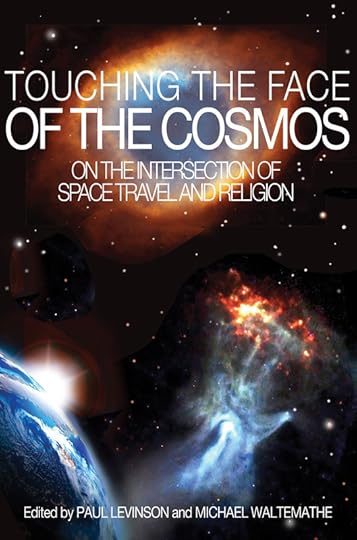
with John Glenn, Guy Consolmagno, much more Paul Levinson's books ... Paul Levinson's music
Published on January 14, 2018 22:59
Philip K. Dick's Electric Dreams 1.7 The Father Thing: Dick from Space

The 1950s were invaded with science fiction in which entities from outer space arrived here and took over the bodies of human beings. Invasion of the Body Snatchers - made into a movie at least three times (1956 and 1978 by that name, and again in 1996 as just Body Snatchers) and many more times as riffs on the same story with different names - is the best-known iconic template for that tale. It was good to see it back again in The Father Thing, episode 1.7 of Philip K. Dick's Electric Dreams, standalone stories all streaming on Amazon Prime, which I've been reviewing here one at a time.
 The Father Thing tells us this story from the perspective of a boy whose father has been taken over by an alien from space. Written and directed by Michael Dinner (Justified) from Philip K. Dick's 1954 story "The Father-Thing," The Father Thing without the hyphen nonetheless has an appealing 1950s flavor, with a Twilight Zone ambience and a Stranger Things wrap-up - as the boy and then his friends in effect become freedom fighters - which brings the story into the present in terms of what we're seeing these days on television. Indeed, that and the hashtag #RESIST and video-chatting, plus the use of the word "dick" in several pivotal places (such as when the son refers to the invaders as "dicks from space"), are about the only concessions The Father Thing makes to 2018.
The Father Thing tells us this story from the perspective of a boy whose father has been taken over by an alien from space. Written and directed by Michael Dinner (Justified) from Philip K. Dick's 1954 story "The Father-Thing," The Father Thing without the hyphen nonetheless has an appealing 1950s flavor, with a Twilight Zone ambience and a Stranger Things wrap-up - as the boy and then his friends in effect become freedom fighters - which brings the story into the present in terms of what we're seeing these days on television. Indeed, that and the hashtag #RESIST and video-chatting, plus the use of the word "dick" in several pivotal places (such as when the son refers to the invaders as "dicks from space"), are about the only concessions The Father Thing makes to 2018. It's not surprising that Dick the writer partook of this theme, since the question of whether the man is my father or an alien who has commandeered his body is another version of is it real or my imagination, this or that dimension, which all but consumed Philip K. Dick. But Dick and now Dinner do an especially good job at telling this story, melding the angst of the son with the beginning of a coming of age story for him. Good work by Greg Kinnear as the father thing, Mireille Enos as the mother, and Jack Gore (Billions) as the son. Philip K. Dick's Electric Dreams episodes continue to have excellent performances by big name and lesser known actors.
See also Philip K Dick's Electric Dreams 1.1 Real Life: Mutually Alternate Realities ... 1.2 Autofac: Human v Machine ... 1.3 Human Is: Compassion or Alien? ... 1.4 Crazy Diamond: DNA Batteries ... 1.5 The Hood Maker: Telepathy and Police ... 1.6 Safe and Sound: This Isn't A Drill ... 1.8 Impossible Planet: Eye of the Beholder ... 1.9 The Commuter: Submitted for Your Approval ... 1.10: Kill All Others: Too Close for Comfort



more alternate identities ... Paul Levinson's books ... Paul Levinson's music
Published on January 14, 2018 18:30
Philip K. Dick's Electric Dreams 1.6 Safe & Sound: This Isn't a Drill

Safe & Sound - episode 1.6 in Philip K. Dick's standalone 10-episode anthology series on Amazon Prime which I'm reviewing one episode at a time (with minimal spoilers and no or scant comparison to the original Philip K. Dick stories) - returns to the familiar but always exquisite Dick territory of is it real or illusion, in this case the real being an ear gel through which Foster Lee hears the voice of a digital assistant, the illusion being the possibility that the voice is literally in her head, given some credence since her father was a psycho who heard voices.
This dilemma is presented in the environment of a not-so-distant future in which the big Eastern cities are worried about domestic terrorist attacks from the rural "bubbles" out West. On that count, Safe & Sound is as reminiscent of Damon's Knight's 1951 story "Natural State" as it is of Philip K. Dick's 1955 "Foster, You're Dead!" on which it is thinly based.
 But there's nothing thin about Safe & Sound, written for television by Kalen Egan and Travis Sentell, who give us an hour rich in symbolism and relevance to our own time, including the words "this isn't a drill," heard just yesterday in Hawaii, in our reality, when someone who should have known better released an announcement of an incoming ballistic missile attack in error.
But there's nothing thin about Safe & Sound, written for television by Kalen Egan and Travis Sentell, who give us an hour rich in symbolism and relevance to our own time, including the words "this isn't a drill," heard just yesterday in Hawaii, in our reality, when someone who should have known better released an announcement of an incoming ballistic missile attack in error.Paranoia is also a mainspring of Dick's fiction (and as his biographers and people who knew him attest, sadly also his life), and Annalise Basso does a fine job of portraying Foster in the throws of struggling with whether what she is hearing is real or worse - though, in this case, paranoia could be the better of the two choices, since what she hears from her digital helper are escalating warnings about terrorists about to attack, and what she needs to do to stop that.
Well directed by Game of Thrones' Alan Taylor, and it was good to see Maura Tierney as Foster's mother, with almost the exact same personality as Helen in The Affair. Hey, I'll take that until The Affair comes back on the air, and Safe & Sound is eminently worth seeing in its own right.
See also Philip K Dick's Electric Dreams 1.1 Real Life: Mutually Alternate Realities ... 1.2 Autofac: Human v Machine ... 1.3 Human Is: Compassion or Alien? ... 1.4 Crazy Diamond: DNA Batteries ... 1.5: The Hood Maker: Telepathy and Police ... 1.7 The Father Thing: Dick from Space ... 1.8 Impossible Planet: Eye of the Beholder ... 1.9 The Commuter: Submitted for Your Approval ... 1.10: Kill All Others: Too Close for Comfort

terrorists use squirrels in near-future NYC Paul Levinson's books ... Paul Levinson's music
Published on January 14, 2018 13:07
Philip K. Dick's Electric Dreams 1.5 The Hood Maker: Telepathy and Police

Telepathy is another favorite but not-as-well-known-as-some-other themes of Philip K. Dick - appearing in the aforementioned (i..e, mentioned in my review of episode 1.3 of Electric Dreams) "Beyond Lies the Wub" in 1952 - and its combination with police procedural in Philip K. Dick's Electric Dreams episode 1.5, The Hood Maker, makes for a classic Dick amalgam.
 It's also a great story, compellingly rendered. Honor is a telepath or TEEP teaming with Agent Ross to maintain order, which includes controlling the TEEPs, whose ability to read normal human minds sows unease and disorder (understandable). The situation is brought to a boil by the "hood maker" who makes hoods which, when donned, block out the TEEP probes.
It's also a great story, compellingly rendered. Honor is a telepath or TEEP teaming with Agent Ross to maintain order, which includes controlling the TEEPs, whose ability to read normal human minds sows unease and disorder (understandable). The situation is brought to a boil by the "hood maker" who makes hoods which, when donned, block out the TEEP probes. The Hood Maker is smartly written for television by Matthew Graham (who also wrote the TV adaption of Childhood's End and the British version of Life on Mars, much better than the American, by the way), and he has Honor saying such memorable things as "I could read people before I could read books" and Ross telling Honor "you can read minds but you can't read my heart". I just love quintessentially science fictional lines like those.
And there's a nice symmetry between Holliday Grainger (from The Borgias) playing Honor and Richard Madden (from Medici) playing Ross. Good directing, too, by Julian Jarrold.
I've been a sucker for telepathy in fiction every since I read Alfred Bester's Demolished Man as a kid at the end of the 1950s (which, by the way, was also a police story). And I put Sense8 as #1 on my list of best 2017 television series for the same reason (it also has a strong telepathy and police element). I put The Hood Maker in the same company,
See also Philip K Dick's Electric Dreams 1.1 Real Life: Mutually Alternate Realities ... 1.2 Autofac: Human v Machine ... 1.3 Human Is: Compassion or Alien? ... 1.4 Crazy Diamond: DNA Batteries ... 1.6 Safe & Sound: This Isn't A Drill ... 1.7 The Father Thing: Dick from Space ... 1.8 Impossible Planet: Eye of the Beholder ... 1.9 The Commuter: Submitted for Your Approval ... 1.10: Kill All Others: Too Close for Comfort
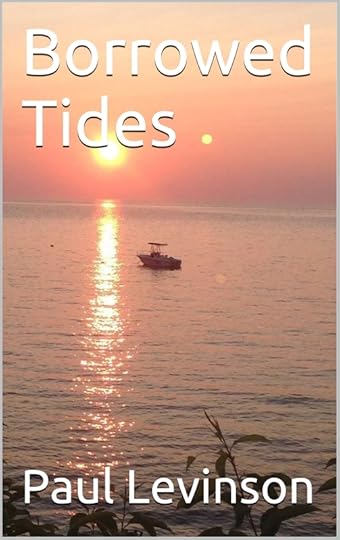
not quite telepathy, but some strange mental powers at large here
Paul Levinson's books ... Paul Levinson's music
Published on January 14, 2018 00:08
January 6, 2018
Media Ecology: A Cartesian Review of Lance Strate's Book
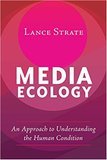 As a few of you may know, I got my PhD from New York University in 1979, in Neil Postman's "Media Ecology" (then new) program. Postman likely got the name from Marshall McLuhan, who used it in the 1960s, and whom I met and came to know and work with after Postman asked me to write a preface to McLuhan's "Laws of the Media," an early, short presentation of his "laws of the media" that Postman published in the journal et cetera (that was the name of the journal - you can read the article with the preface here). There's more about the tetrad in my Digital McLuhan and McLuhan in Age of Social Media, and in this talk I gave at Fordham University this past October.
As a few of you may know, I got my PhD from New York University in 1979, in Neil Postman's "Media Ecology" (then new) program. Postman likely got the name from Marshall McLuhan, who used it in the 1960s, and whom I met and came to know and work with after Postman asked me to write a preface to McLuhan's "Laws of the Media," an early, short presentation of his "laws of the media" that Postman published in the journal et cetera (that was the name of the journal - you can read the article with the preface here). There's more about the tetrad in my Digital McLuhan and McLuhan in Age of Social Media, and in this talk I gave at Fordham University this past October.People always wonder what "media ecology" is. Lance Strate, who got his PhD in the Media Ecology program in 1991, about a decade after me, wrote a book in response, and I can't think of a person better suited to provide a knowledgeable answer. Strate, my colleague at Fordham University and indeed the person who hired me in 1998, took up the "media ecology" banner when Postman was in his declining years. Strate created the Media Ecology Association in 1998 and it's still going strong across the world with yearly conferences. (If you think this makes me a biased reviewer of Strate's book, too bad - read the book, see if you agree, and, if not, tell me on Twitter or wherever where you think I'm wrong - I'm @PaulLev over at Twitter, by the way.)
When reviewing scholarly books - whether in proposal form for would-be publishers, or for review like this after publication - I always apply a Cartesian test: how accurate is the book in describing theories, ideas, and facts that I know best? Strate's book does an A-1 job of describing my work in media theory (I generally prefer theory to ecology, but that's just me), including delving into aspects of my work - like my Tetrad "Wheels" of Cultural Evolution - that are not widely known. As a second indicator, Strate gets Josh Meyrowitz's work just right, too. I sat next to Josh in our PhD seminars at NYU, and I know more about Josh's work than just anyone else's other than mine.
But Media Ecology does much more. It situates the field in the larger areas of human scholarship and discourse, connects it to dozens of scholars in addition to Meyrowitz and me, addresses the synapse of communication in everything from the universe at large to the smallest mark on a page. So, yes, it will tell you, eminently, vividly, clearly, and compellingly what media ecology is all about.
Which I'm not going to tell you here. Read the book.
Ok, here's a very short answer: media ecology is about how communication in one form or another, interconnected like living organisms (hence "ecology") makes things happen in our history and our world, because communication is essential to human life. Or, to borrow from McLuhan, the way I like to put it nowadays is: media ecology is about how without radio, there would have been no Hitler, and without Twitter, no Trump.
All right, McLuhan, who left us in 1980, was responsible only for the radio part of that. All I did was apply it to the present. But that's the point about media ecology: its principles, which as Strate abundantly shows, predate McLuhan and Postman, and now extend far beyond them, are even more relevant today that when we sat in those seminars at New York University.
To be clear, Strate and I by no means are in agreement about the impact of all or any given media on our lives. I tend to be more optimistic than Strate, on technologies ranging from space travel to social media (notwithstanding what I think about Twitter and Trump). But this field has always been about mastering the principles and formulating your own views. If you'd like a handbook on how to do this, and maximize your understanding of what's going on, get a copy of Media Ecology .
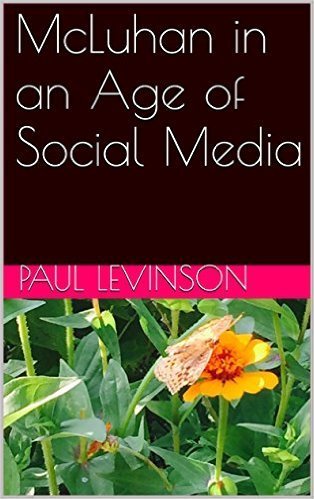
Paul Levinson's books ... Paul Levinson's music
Published on January 06, 2018 21:51
Ten Days in the Valley: Ten Hours Worth Seeing
 Leave it to me to review a limited series on ABC TV that was cancelled midway, and they just threw the final episodes up in the past few weeks, with the finale tonight, when network television is at its lowest ebb of the year, but, hey ...
Leave it to me to review a limited series on ABC TV that was cancelled midway, and they just threw the final episodes up in the past few weeks, with the finale tonight, when network television is at its lowest ebb of the year, but, hey ...I thought Ten Days in the Valley was pretty good. The series featured Kyra Sedgwick (The Closer) as divorced mother Jane Sadler whose little girl Lake is kidnapped, with great supporting work all around, especially by Erika Christensen (Wicked City) as Jane's sister, and Adewale Akinnuoye-Agbaje (Lost) as the detective. So not only did Ten Days have excellent acting, but it also sported a pretty clever and complex plot, with all kinds of twists and turns.
Some were more surprising than others, but hour for hour, the show kept you (or at very least me, and my wife) on the edge of your seat. The dialogue was snappy, funny when it needed to be, and fairly Hollywood hip. The pace was unusual, with perils emerging when other narratives might have put in some mandatory relief or time to relax.
So why didn't the series do better? Another example, I guess, of there's just no accounting for taste. But ABC might have done better to present the ten hours in three or four segments, like those great old-fashioned mini-series of decades ago. No matter, Ten Days in the Valley will no doubt soon take up residence on a streaming service, where you can watch the ten hours in any way you please.
Which I'd definitely recommend.
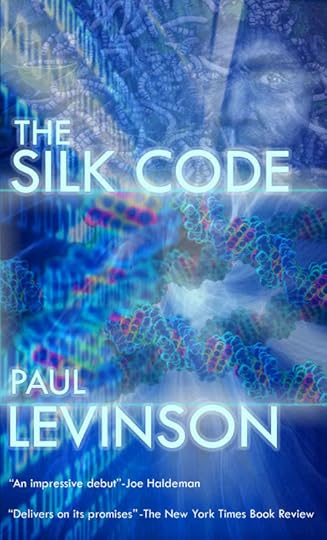
Paul Levinson's books ... Paul Levinson's music
Published on January 06, 2018 19:22
January 5, 2018
Alternate Realities: Architect, Rock Star Junkie, Serial Killer
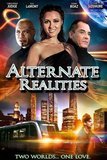 As I mentioned in a recent review of Triple Hit, there's an intrinsic connection between tales of multiple realities and tales of time travel, since multiple realities provide one way of getting around the infamous grandparent paradox - if you travel to the past and prevent your grandparents from meeting, how would you come to exist in the future to travel to the past in the first place - by supposing a Reality 1, in which you existed and traveled to the past and prevented your grandparents from meeting, which created Reality 2, in which you never existed, so no paradox arises. That possible backdrop of time travel got me to watch Triple Hit, which turned out to have next to no time travel, and it led me to watch Alternate Realities, a 2015 feature film also available free on Amazon Prime.
As I mentioned in a recent review of Triple Hit, there's an intrinsic connection between tales of multiple realities and tales of time travel, since multiple realities provide one way of getting around the infamous grandparent paradox - if you travel to the past and prevent your grandparents from meeting, how would you come to exist in the future to travel to the past in the first place - by supposing a Reality 1, in which you existed and traveled to the past and prevented your grandparents from meeting, which created Reality 2, in which you never existed, so no paradox arises. That possible backdrop of time travel got me to watch Triple Hit, which turned out to have next to no time travel, and it led me to watch Alternate Realities, a 2015 feature film also available free on Amazon Prime.And it turns out there's even less time travel in Alternate Realities, the sum total of which is a professor's joking comment to his class that "Just because we are studying theoretical physics does not mean that time travel will be an acceptable excuse for tardiness". Nonetheless, Alternate Realities is a pretty good alternate realities story, and warrants a watch.
There are three for our hero, John Rotit, for most of the movie, in which he's an architect in one, a rock star drug addict in another, and a serial killer in a third. His main reality seems to be the architect, where he's happily married and totally in love with his wife Clare, but is tormented by his knowledge of himself in the two other realities where, to say the least, he has no such relationship. And to make matters worse - or maybe better - the three realities are beginning to converge.
As the story develops, we're faced with a choice ourselves as an audience - is John really in three alternate realities (and, if so, why?), or is he suffering from a severe case of multiple personalities? So, you could say the audience is given its own or meta-alternate realities, in the choice of which kind of story we're seeing.
I won't tell you the ending, which does tell you what kind of story we've been seeing. It's only partially predictable, which makes the overall movie pretty good. Donny Boaz does a good job as John(ny) in three realities/personas, as does Elle LaMont as Clare. Similarly, good writing by Andrew M. Henderson and good direction by Amir Valinia. I'd say - give it a shot. At very least, in this reality.



more alternate realities ...

watch The Chronology Protection Case FREE on Amazon Prime
Paul Levinson's books ... Paul Levinson's music
Published on January 05, 2018 19:47
January 4, 2018
I Thought You Would Last Forever: Time Travel, Russian Style
 I Thought You Would Last Forever - the English title of Ya dumal, ty budesh vsegda, a 2013 Russian feature-length time-travel romance, now streaming free with English subtitles on Amazon Prime - is no Anna Karenina. But it tells a pretty good time travel story of broken hearts and quietly heroic attempts to repair them, and is imbued with the fatalistic but deeply human Russian spirit.
I Thought You Would Last Forever - the English title of Ya dumal, ty budesh vsegda, a 2013 Russian feature-length time-travel romance, now streaming free with English subtitles on Amazon Prime - is no Anna Karenina. But it tells a pretty good time travel story of broken hearts and quietly heroic attempts to repair them, and is imbued with the fatalistic but deeply human Russian spirit.The basic story is a middle-aged man Evgeniy in 2012, distraught after his wife Mila dies, is given a chance to go back in time to the 1980s, and change some crucial things in their relationship. He feels guilty because he's been unfaithful to her, and suspects that she had been the same to him. There's no scientific explanation whatsoever given for the time travel, indeed no magical or mystical explanation either, which makes this movie even less connected to reality than Outlander. But it still works on its own terms.
There are lots of inside Russia jokes related to the time travel, but they're easy enough for an American or anyone to get. Evgeniy trips up in the 1980s when he tells Mila and her neighbors about someone in St. Petersburg, which in the Soviet 1980s was still Leningrad. He tells a young man that he has a bright future ahead when he demonstrates a talent for making money. There's a statue of Lenin which looks a bunch of birds did a number on it.
The acting, carried by Konstantin Milovanov as Evgeniy and Irina Tarannik as Mila, is quite good. The language and general ambience got me in the mood for The Americans, the sixth and final season of which will air some time in 2018, with any luck this Spring. But most important for a time-travel story, the connections through time - aka loops - worked well and all came to make sense in the end. If you're a fan of the genre, I'd definitely recommend.


watch The Chronology Protection Case FREE on Amazon Prime

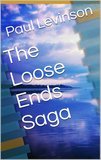

Paul Levinson's books ... Paul Levinson's music
Published on January 04, 2018 23:26
Levinson at Large
At present, I'll be automatically porting over blog posts from my main blog, Paul Levinson's Infinite Regress. These consist of literate (I hope) reviews of mostly television, with some reviews of mov
At present, I'll be automatically porting over blog posts from my main blog, Paul Levinson's Infinite Regress. These consist of literate (I hope) reviews of mostly television, with some reviews of movies, books, music, and discussions of politics and world events mixed in. You'll also find links to my Light On Light Through podcast.
...more
- Paul Levinson's profile
- 342 followers



